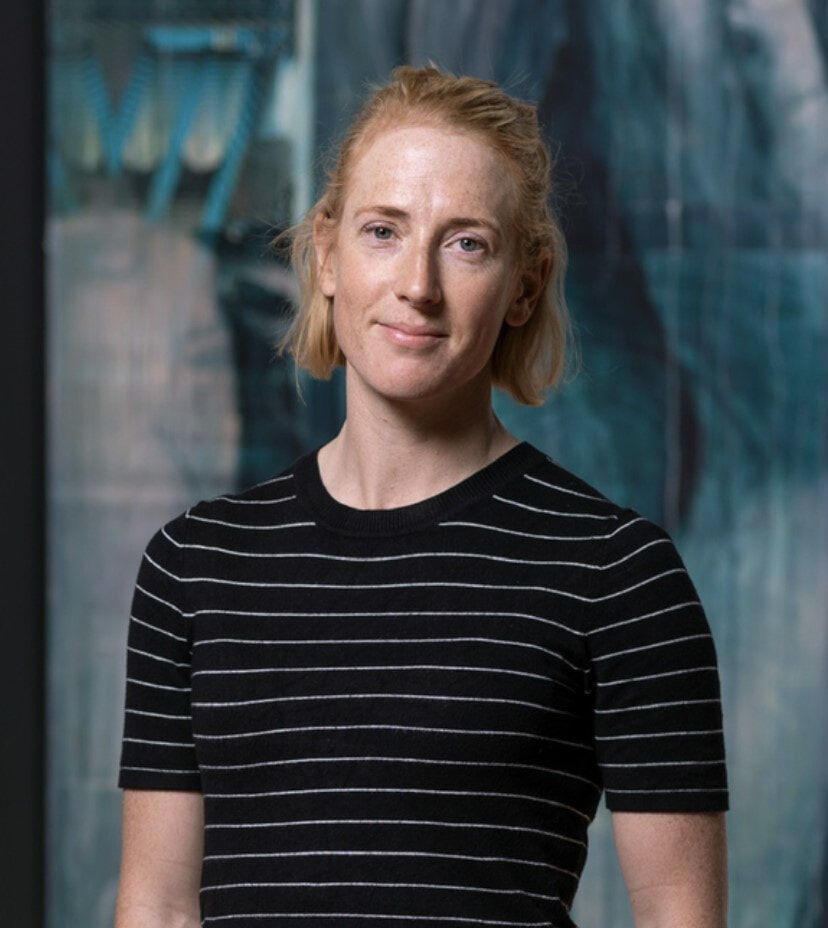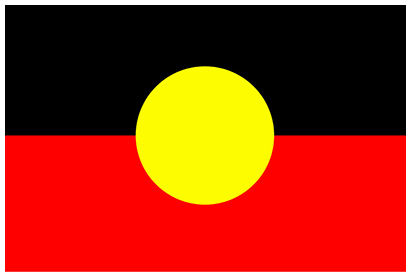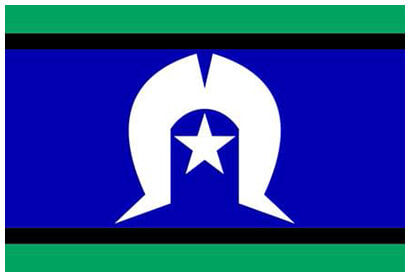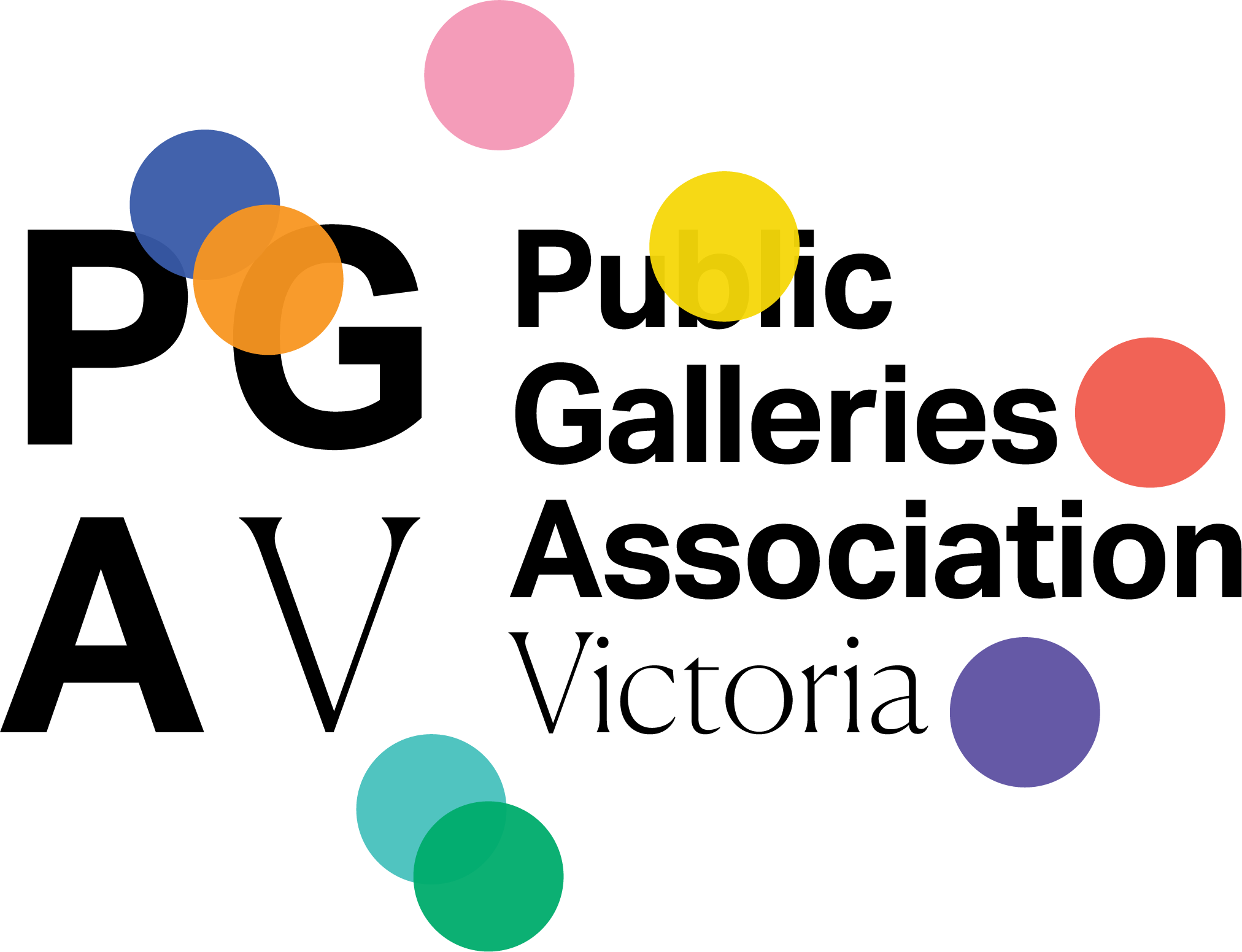Exhibitions Manager
Professions in the Public Gallery Sector

Pip Minney
Exhibitions Manager
Geelong Gallery
Date: November 2022
the role of Exhibitions Manager
For information about roles within public galleries see the PGAV Fact Sheet: Staffing Levels & Position Titles
How did you get started in your career and what formal qualifications or experience do you have?
After spending time in European art galleries during my gap year I thought I wanted to design art museums, but early in my first year of studying Architecture at RMIT I came to the realisation that the design and construction of art galleries was not as interesting to me as the history of architecture. In researching architectural history, I learnt of the world of art curatorship and exhibitions development and enrolled in the Bachelor of Art History and Curatorship at ANU, Canberra. As part of the honours program, I undertook an internship with the National Gallery of Australia’s Australian Prints and Drawings department – which in addition to my studies provided me with a solid foundation in the basics of art handling and storage as well as basic cataloguing and provenance research - which led to being offered the role of Executive Assistant to the Head of Australian Art. I’ve since worked in curatorial, exhibitions and collection management roles at Gold Coast City Gallery, the Shrine of Remembrance, the National Gallery of Victoria, City of Stonnington and now Geelong Gallery and along the way I have gained experience in exhibition development and delivery. Late last year I completed a Master of Business (Arts and Cultural Management) at Deakin University, which through the lens of business management, has provided me with a greater understanding of the context we work in.
What does your role as Exhibitions Manager encompass?
Essentially, I am a project manager for art exhibitions – using creative problem-solving as well as continuously improving processes, my role is to oversee all the logistics of an exhibition’s development and delivery, which then allows others to focus on their jobs. Because I am a project manager at heart, let’s go chronologically with the key steps and activities of an Exhibitions Manager:
Schedules
I coordinate an exhibitions schedule, organised by year, that allows us to share internally what everyone is working towards. This allows teams to forward plan to ensure deadlines are met. I work closely with our Senior Curator on this schedule to ensure we don’t have access issues and can meet deadlines. The inverse of the Exhibitions Schedule is the Installation Schedule, which details specifically what needs to happen each day during an installation period (deliveries, prep, build, patch/paint etc). This is my bible.
Project plan
Once an exhibition has been approved, I create a project plan for it – based on a tiered system of exhibitions (which reflects the resourcing available). This is done via a project management application which allows me to work from templates (no need to reinvent the wheel) but also to allocate tasks and notify team members of deadlines for checklists, summaries, media and marketing deadlines, installation dates, signage etc.
Contract management
I draft contracts, such as artist, exhibition touring and guest curator agreements. I also manage the contracts for incoming exhibitions and ensure that contractual requirements are relayed to team members.
Meetings
I coordinate regular team and gallery wide meetings, such as exhibitions briefings, exhibition interpretation meetings, logistics and planning meetings.
Risk
For each exhibition I develop Safe Work Method Statements (SWMS) for install as well as coordinate risk registrars which culminate in a walkthrough post-install and pre-opening to ensure that risks to art, visitors and institutional reputation are minimised.
Budget
I coordinate a yearly exhibitions budget, informed by meetings with the Senior Curator, and then manage this according to changes in resources or exhibition scope.
Signage schedule
I develop a signage schedule that I update following meetings with the curators. This incorporates all caption labels, didactics, mastheads, graphics and wayfinding. I work with a graphic designer on the non-curatorial signage. When it is all packaged up, I send to printers, and then oversee the installation with the curator.
Installation
The real fun! I oversee the deinstall and then prep / build of an exhibition space and then the installation of art, signage and lighting. I oversee a team of art handlers and work closely with the exhibition’s curator.
Processes
I love setting up new processes. As we have developed a grouping system in the gallery for our exhibitions program, it means that we can use templates for project plans, checklists, signage schedules, invite lists, image caption docs – the list goes on. When a process changes, I update this in our project templates.
I’m basically that person who will knock on your door and *trying to be kind* remind you of a deadline coming up. If something is not possible, we will work to see what can be moved to ensure we still meet deadlines.
What knowledge and skills do you think are most needed for this role?
- A high level of organisation and an ability to forward plan to minimise issues.
- Flexibility / ability to tactically respond to on-the-ground issues (something always happens that we can’t foresee).
- Excellent communication skills – this role is the cog that keeps everything going and ensures everyone has up to date information.
- Deep respect for your colleagues and other work areas – it is essential that I have a basic understanding of what my colleagues do, but I know when to call on the curator, collection manager, registrar, technician.
- A high level of calm, especially when aforementioned thing goes wrong - although Covid lockdowns and constant rescheduling and rule changes did throw me.
- Ability to work on multiple projects simultaneously – essentially, juggling competing and changing priorities.
What is one of the most complex projects you’ve had to work on in your role?
At the front of my mind as I write this, it is touring an exhibition for Geelong Gallery of works by Blanche Tilden – an incredibly talented and clever glass and jewellery artist. The result of this project is a beautiful exhibition that installs quite smoothly; however, the exhibition development and management has been complex (which I kind of love). This is essentially down to the complexity of touring and installing precious glass jewellery, on open display, into different sized galleries, with some objects requiring different environmental conditions than others. Then, managing a touring schedule during Covid lockdowns, major weather events, last minute venue changes and maternity leave during key dates – made this a complex project. Through some innovative solutions from exhibition designer Martin Reid and curator Jason Smith – such as pre-pinned jewellery that travels in its display, standard size display discs that can be swapped in and out, and numbered pins to refer to the catalogue details – we have managed to counteract many of the complexities. We are a gallery with a busy and varied exhibitions schedule and compact team; hence we are quite proud of the result. We have toured the show to regional NSW, Adelaide, Brisbane and Canberra (where it is currently on display). Early next year it will travel to Sydney as its final stop. Along the way I have met colleagues who are welcoming and hard-working, and all want to champion the work of this incredible artist. Overcoming some of the challenges and working with Blanche, Jason, Martin and Geelong Gallery colleagues has been very rewarding.
What do you enjoy most about your role?
First and foremost, working with the art and the artists who create and want to share their work! I still pinch myself when I get to work with an object I have read about or an artist I have studied. Secondly, it’s the people. I have connected with so many like-minded people and made life-long friends in this industry. I have such admiration for my current and past colleagues who are so passionate and committed to ensuring the best care of objects, whilst respecting the artist’s intentions or vision, and the curators who want the best exhibition experience for visitors. Finally, I just love organising and contributing to the creation of great exhibitions. And the dopamine hit of clicking ‘completed’ on a task in our project management software is addictive.
What has been your career highlight so far?
This is a tricky question! At Geelong Gallery and NGV I have worked on incredible Australian and international exhibitions, with teams of professionals who are dedicated to delivering the best exhibitions possible. And at the NGA I worked closely with a world class art collection learning from curators who had written books I’d loved as a student. But I think a highlight would have been realised on Remembrance Day 2014. As Exhibitions Coordinator for the Shrine of Remembrance’s Galleries of Remembrance (a purpose built temporary and permanent exhibitions space beneath the Shrine) I coordinated the administration and installation of more than 800 works on loan. This included all registration aspects of bringing in incredible contemporary and historical art, but also fascinating objects such as a boat that landed at Gallipoli, missiles from multiple conflicts, Great Coats worn by First World War airmen, pre-Federation tunics, a Battle of Britain lace tapestry and a flag signed by Prisoners of War at Changi. I had the honour of travelling around Victoria, meeting institutional counterparts as well as lenders and learning the individual stories of their family or comrades.
I also had the pleasure of working with a fun and professional team on the set up of new collection storage and exhibition prep areas at the Shrine of Remembrance – I loved having time (and budget) to contribute to the selection of display cases, lighting, wayfinding and graphics as well as develop new processes and contribute to the way the team would manage future exhibitions. We worked with incredible exhibition designers and AV / tech specialists to create engaging interpretation platforms. This project was complex due to the deadlines (you can’t move Remembrance Day!), the scale of what we were working with, and the historical architecture we were working within, however it was one of the most rewarding projects I’ve worked on. To see the public streaming through on Remembrance Day, 100 years after the end of the First World War, was spectacular.
What are the key issues for public galleries into the future?
Sustainability – both financially but also environmentally.
Remaining relevant – constantly updating according to community and sector demand and our changing regions, as well as competing with other sectors.
Additionally, for smaller galleries – keeping up with advanced and changing technologies that are expected by visitors.
The Public Galleries Association of Victoria (PGAV) acknowledges the Wurundjeri Woi-Wurrung people of the Kulin Nation as the Traditional Owners of the lands where our office is located, and all Traditional Owners of country throughout Victoria and Australia. We recognise Aboriginal and Torres Strait Islander peoples enduring traditions and continuing creative cultures. We pay our respect to Elders past, present and emerging.
We are an LGBTQIA+ friendly organisation that celebrates diversity. We are committed to providing safe, culturally appropriate, and inclusive services for all people, regardless of their ethnicity, faith, disability, sexuality, or gender identity.






